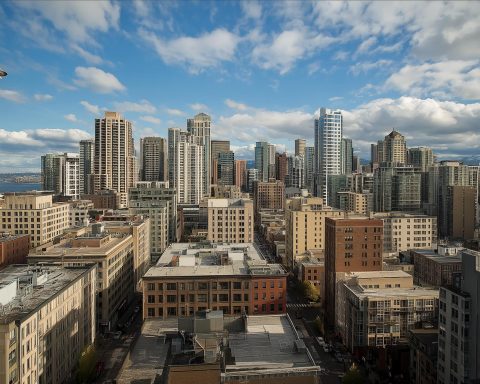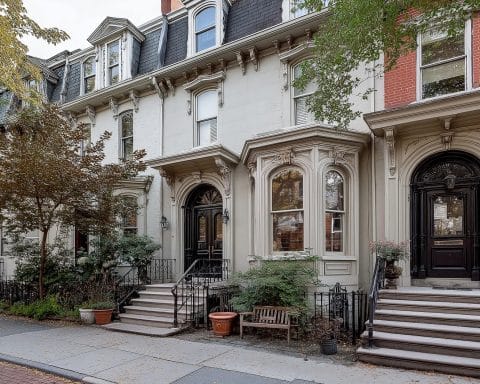Christchurch’s property market in 2025 is characterized by resilience and steady growth across residential, commercial, and industrial sectors. The city has largely shaken off the nationwide downturn of 2022–2023 and is leading New Zealand’s housing recovery in 2024/25 oneroof.co.nz squirrel.co.nz. Average home values in Christchurch are almost back to their post-Covid peak, sitting around NZ$798,000 (only 0.5% below the June 2022 record) oneroof.co.nz oneroof.co.nz. In contrast, larger markets like Auckland and Wellington remain well below their previous highs and aren’t expected to fully recover until 2028 or later oneroof.co.nz oneroof.co.nz. Christchurch’s relative affordability, ongoing rebuild developments, and strong population inflows have combined to create a more buoyant outlook than many other regions oneroof.co.nz oneroof.co.nz. This report examines current trends and forecasts across residential, commercial, and industrial real estate, with suburb-level insights, pricing and rental analysis, upcoming developments, infrastructure projects, and key economic and policy factors shaping the market through 2028.
Residential Property Trends
Christchurch’s housing market is in recovery mode, with prices climbing modestly in 2024/25 after a shallow decline. The city’s average property value rose ~1.4% in the three months to May 2025, bringing values within a few thousand dollars of their all-time high squirrel.co.nz. In fact, Christchurch is poised to hit a new peak by mid-2025, far sooner than Auckland (projected 2028) or Wellington (2031) squirrel.co.nz oneroof.co.nz. Figure 1 compares current prices and recovery timelines across major markets. Christchurch’s outperformance reflects its milder downturn (only ~6.5% fall from peak, vs. ~20%+ in Wellington) corelogic.co.nz and enduring appeal to value-conscious buyers oneroof.co.nz. The city’s house prices did not over-inflate to the same extent as in Auckland/Wellington, so the correction was gentler and the rebound faster oneroof.co.nz. At around NZ$650,000–$800,000 for a median home, Christchurch offers a larger house and section for the money, which has attracted both first-home buyers and movers from pricier regions oneroof.co.nz. Solid employment and renewed migration have underpinned housing demand, while record listing volumes give buyers plenty of choice squirrel.co.nz corelogic.co.nz. Overall, the residential market in 2025 is firm but not frenzied – prices are inching up, not spiking, and sales volumes are recovering from very low levels corelogic.co.nz corelogic.co.nz.
Table 1. Christchurch vs. Other Markets – Home Prices and Recovery (Valocity/OneRoof data oneroof.co.nz oneroof.co.nz)
| Market | Avg. Value (May 2025) | Below Peak (%) | Expected Return to Peak |
|---|---|---|---|
| Christchurch | NZ$798,000 oneroof.co.nz | –0.5% (virtually at peak) oneroof.co.nz | Jul 2025 oneroof.co.nz |
| Auckland | NZ$1,300,000 oneroof.co.nz | –17.7% oneroof.co.nz | Dec 2028 oneroof.co.nz |
| Wellington | NZ$956,000 oneroof.co.nz | –28.6% oneroof.co.nz | Jul 2031 oneroof.co.nz |
| NZ Average | NZ$969,000 oneroof.co.nz | –11.7% oneroof.co.nz | Jun 2027 oneroof.co.nz |
| Queenstown-Lakes | NZ$2,100,000+ oneroof.co.nz | Above Peak (new highs) oneroof.co.nz | Already surpassed |
Table 1: Christchurch’s housing values have nearly recovered their pandemic-era peak, outpacing other major centres. (Sources: OneRoof-Valocity index oneroof.co.nz oneroof.co.nz)
Suburb-Level Insights
Christchurch’s property fortunes vary by suburb, reflecting differing demographics and rebuild histories. Prestige suburbs like Fendalton in the leafy northwest command the city’s top prices – average values are around $1.78 million in Fendalton oneroof.co.nz – and have held value well. By contrast, many first-home-buyer suburbs on the city fringes offer homes under $700,000 and are seeing brisk activity in 2025. Areas such as Redwood, Belfast, Bishopdale, Hornby, and Broomfield (in northern and western Christchurch) have high demand for entry-level houses, with well-priced listings “snapped up” quickly by buyers taking advantage of improved affordability squirrel.co.nz. These suburbs, often with good schools or new developments, are benefiting from the shift toward larger homes and yards that Christchurch offers to those moving from denser cities.
The central city residential scene is also evolving. Following the post-earthquake rebuild, Christchurch’s CBD now features modern apartments and townhouses that appeal to professionals and downsizers. While central city living remains a smaller segment, the ongoing revival (including retail and entertainment amenities) is making inner-city suburbs like Sydenham and Springs Road precinct more attractive. In the eastern coastal suburbs (e.g. New Brighton, Southshore), property values have lagged somewhat due to historical earthquake damage and higher insurance costs, but revitalization projects (a new beachside hot pools complex and planned coastal protection measures) are gradually renewing buyer interest. Overall, most Christchurch suburbs have stabilized or returned to growth, and dozens of suburbs across Canterbury hit new price highs in late 2024 thanks to the region’s strong upswing oneroof.co.nz oneroof.co.nz. Virtually all of the top-performing suburbs nationally in early 2025 were in the South Island, underlining Christchurch’s leading role in the recovery oneroof.co.nz.
Rental Market Trends and Yields
The rental market in Christchurch has shifted to favor tenants in 2024–2025, a notable change after years of tight supply. For the first time in over a decade, rental stock is up ~20% year-on-year in the city squirrel.co.nz. A surge of new builds hitting the market and some homeowners choosing to rent out unsold properties have swollen the supply of available rentals. Consequently, rent increases have flattened – Christchurch’s median rents were roughly stable through late 2024, rising only about 1–2% annually (well below inflation) corelogic.co.nz globalpropertyguide.com. In fact, Canterbury recorded just a +1.8% annual rent rise as of Oct 2024, compared to zero growth in Auckland rents over the same period globalpropertyguide.com. With listings at record highs and tenant demand at four-year lows, many landlords are now offering discounts or incentives to fill vacant units squirrel.co.nz globalpropertyguide.com. Renters have more choice and bargaining power than in recent memory, a trend expected to continue in the short term globalpropertyguide.com.
From an investment perspective, rental yields in Christchurch are relatively strong by NZ standards. Gross yields average around 4.5% in Christchurch, compared to ~4.3% in Auckland and Wellington globalpropertyguide.com globalpropertyguide.com. For example, typical houses and townhouses in Christchurch generate about 4.4–4.6% gross yield (Q4 2024) globalpropertyguide.com. This reflects Christchurch’s lower entry prices and solid rents, giving investors better cashflow than in Auckland (where yields nearer 3–4% are common) grenadier.co.nz. Local agencies note that Christchurch’s average yield ~4.3% significantly outshines Auckland’s ~2.9% grenadier.co.nz, making the city attractive for those seeking income. However, with interest rates having been high, net yields (after mortgage costs) remained slim in 2024. The good news for landlords is that borrowing costs are now trending down (see Infrastructure & Economic Drivers below), which should improve the profitability of rentals. Tenant demand is also expected to pick up in coming years as population growth continues – Christchurch has a large student population (University of Canterbury, etc.) and is seeing high demand for family homes and modern townhouses to rent, even if overall rent inflation is subdued grenadier.co.nz. All told, the rental outlook is one of stability: ample supply is keeping rents affordable for tenants in the near term corelogic.co.nz, but investors can still achieve decent yields and may benefit from renewed rent growth once excess supply is absorbed by 2026+.
Commercial Property Trends (Office & Retail)
Christchurch’s commercial property sector is enjoying a period of high occupancy and rising rents, bucking global trends of softness. Office space in Christchurch has been a standout performer: prime office vacancies in the CBD fell to just 0.4% by late 2023 oneroof.co.nz as businesses competed for quality space in the modern post-quake buildings. Even with a significant new wave of supply in 2024 (over 33,500 m² of new or refurbished offices coming online) oneroof.co.nz, demand has largely kept up. The overall CBD office vacancy dropped from 5.7% in mid-2023 to 3.1% by Dec 2023 oneroof.co.nz. A temporary uptick in vacancy to ~8.4% in early 2025 was recorded when one large refurbished building (224 Cashel St, 14,000 m²) hit the market, but excluding that single project, core vacancies stayed around 4% cbre.co.nz – exceptionally low by international standards. This tight market pushed office rents upward: prime CBD net rents reached about $370–$380 per m² in early 2024 (up ~3% YoY) oneroof.co.nz, and top “development” rents (for brand-new premium space) are now over $450/m² oneroof.co.nz. Suburban office sectors are also seeing rent growth, especially for prime space cbre.co.nz. Lease activity remains healthy in 2025, though mainly for well-located, small-floorplate offices which are highly sought after by local firms oneroof.co.nz. Developers are proceeding cautiously – nearly all new office builds require pre-committed tenants (“build-to-order”), with little speculative construction due to high costs and cautious financing oneroof.co.nz. Nonetheless, the pipeline of projects like The Regent office development in Cathedral Square and several high-profile refurbishments show confidence in Christchurch’s office outlook oneroof.co.nz.
Retail property in Christchurch has surged to the forefront of New Zealand’s retail scene, thanks to a post-quake CBD revitalization and strong consumer spending. Prime retail strips in the CBD (Cashel Mall and High Street) now boast extremely low vacancy and booming rents oneroof.co.nz oneroof.co.nz. CBRE reports prime CBD retail rents jumped ~28% in 2024 alone, rising for five consecutive quarters oneroof.co.nz oneroof.co.nz. By Q4 2024, top-end shopfronts in Cashel Mall were achieving net effective rents around $920/m² – up 5% in just one quarter oneroof.co.nz – with some flagship spaces approaching $1,200/m² gross oneroof.co.nz. This growth far outpaces Auckland and Wellington, where CBD retail rents have been flat or falling in recent years oneroof.co.nz. The drivers include surging tenant demand from well-capitalized national and international brands, drawn by Christchurch’s rising population and tourism rebound oneroof.co.nz oneroof.co.nz. Retail sales in Canterbury have been outperforming other regions (up ~1% in the year to Sept 2024, vs negative in Auckland/Wellington) oneroof.co.nz. As a result, retailers see Christchurch as an expansion opportunity and are willing to pay premium rents to secure a presence in the rejuvenated CBD oneroof.co.nz. The upcoming One NZ Te Kaha Stadium (a new 30,000-seat covered arena) is also fueling optimism – retail and hospitality operators anticipate a boost in foot traffic and spending when the stadium opens in 2026 oneroof.co.nz. With the prime retail core effectively full, overflow demand is now extending to fringe CBD locations like Lichfield Street and the “Salt District,” pushing up rents there as well (+2.9% in Q4 2024) oneroof.co.nz.
Outside the CBD, suburban retail centers and malls in Christchurch are stable and benefitting from population growth in their catchments. Major shopping hubs (Riccarton, Northlands, The Palms, etc.) report steady occupancy, although they face the national challenges of soft consumer confidence and online competition. Notably, Christchurch’s retail spending has been supported by a resurgence of international tourists post-Covid and by the city’s comparatively resilient local economy, which helped retail turnover grow ~8% in central city in 2023 oneroof.co.nz. Overall, investors have taken notice of Christchurch’s commercial property strength. High demand and low vacancy across office, retail, and industrial segments are giving investors confidence and putting upward pressure on values oneroof.co.nz. While transaction volumes have been subdued (due to a gap between buyer and seller expectations), that gap is now starting to close as the yield cycle peaks and stabilizes oneroof.co.nz oneroof.co.nz. Indeed, yields for prime assets have begun to firm (compress) again for the first time since 2021, indicating prices may be bottoming out cbre.co.nz. For example, in early 2025 prime strip retail yields firmed to ~6.77% (down a few bps) and prime industrial yields to ~5.97%, reversing their upward drift from the prior year cbre.co.nz. This points to a more positive outlook for capital values in Christchurch’s commercial sectors going forward.
Industrial Property Trends
The industrial real estate sector in Christchurch remains exceptionally strong, underpinned by very low vacancy and consistent tenant demand. For much of 2023, Christchurch’s industrial vacancy was effectively near zero – only 0.6% overall vacancy at end of 2023 (and a mere 0.1% in prime-grade facilities) oneroof.co.nz. Even by Q1 2025, vacancy only rose slightly to around 1.8%, which is still “historically low” and one of the tightest industrial markets in the world cbre.co.nz. The small uptick reflects a moderation in demand alongside new speculative builds completing, but good space is absorbed quickly and tenants remain focused on expanding or upgrading to modern premises cbre.co.nz. With supply scarce, rents have surged to record levels: prime warehouse rents in Christchurch hit about $136 per m² in early 2024, up ~5.6% year-on-year oneroof.co.nz. New-build “development” rents are even higher, around $140–$150/m² for top-end logistics facilities oneroof.co.nz. High construction costs have added pressure, pushing landlords to seek higher rents to justify new projects oneroof.co.nz. However, rent growth did level off somewhat in the first half of 2025, as the market pauses after consecutive annual gains cbre.co.nz. Still, the fundamentals remain very robust – industrial occupancy is near full capacity, giving landlords pricing power whenever leases roll over.
Christchurch’s status as the commercial hub of the South Island ensures strong demand for warehouse, manufacturing, and distribution space. The Hornby area (southwest Christchurch) has solidified its role as the primary industrial precinct, thanks to excellent transport links via State Highway 1 and the new motorways. Hornby leads in new development activity, with 10 projects totaling ~34,000 m² currently in the pipeline cbre.co.nz. Close behind are Middleton (in the west) and Rolleston (a fast-growing satellite town in Selwyn District), which together have ~18,000 m² of industrial projects underway cbre.co.nz. Overall, as of late 2024 there were 39 commercial projects under construction or about to start across greater Christchurch, and nearly half of that new floor area (≈68,000 m²) is industrial cbre.co.nz. This active development pipeline includes some major expansions: for example, Woolworths NZ is expanding its Hornby distribution centre by adding a new 17,000 m² warehouse (bringing the complex to ~47,000 m²) to future-proof its supply chain auckland.bayleys.co.nz auckland.bayleys.co.nz. Another global player, Lineage Logistics, has lodged plans for a massive new cold-storage facility in the Rolleston industrial hub – a vote of confidence in Christchurch’s strategic location for food distribution businessdesk.co.nz. These investments by blue-chip tenants (Woolworths, Foodstuffs, DHL, etc. are all present in Hornby auckland.bayleys.co.nz) underscore the long-term growth trajectory for industrial property.
Investor sentiment toward industrial assets remains very positive. Yields had risen in 2022 with interest rates, but as noted earlier they appear to have peaked and begun to firm back down in early 2025 cbre.co.nz. Prime industrial yields in Christchurch are now around 6% or just below, which is a highly competitive rate nationally cbre.co.nz. Although higher interest rates last year sidelined some leveraged investors, the outlook of easing monetary policy is already bringing back interest, and local investors have ample capital ready to deploy for quality warehouses oneroof.co.nz. The key challenge is product availability – few owners want to sell prime industrial in Christchurch given its performance. With such low vacancy, even a slight softening in tenant demand in 2024 didn’t translate to any real distress; tenants requiring space often have to build new or wait in line. Some moderation in the sector’s red-hot momentum is occurring (leases are taking a bit longer to finalize, and tenants are cost-conscious), but overall industrial property fundamentals remain among the strongest of any sector. Barring a major economic downturn, rents are expected to stay firm and could see further uplift once current new supply is absorbed oneroof.co.nz. Christchurch’s industrial market thus offers a combination of high occupancies, rising rents, and improving yields, making it a secure bet for investors through the decade.
Upcoming Developments and Urban Planning
Christchurch in 2025 is in the midst of a continued physical transformation, with several major developments nearing completion or recently commenced. The city’s rebuild from the 2010–11 earthquakes has evolved into a forward-looking urban renewal, guided by master plans and new infrastructure. Table 2 highlights some key property developments and projects underway:
Table 2. Selected Major Developments in Christchurch (2024–2026)
| Project (Location) | Type | Status/Completion | Significance |
|---|---|---|---|
| Parakiore Metro Sports (CBD) | Recreation & Community | Opening 2025 | Enormous new sports complex (pools, courts, gyms) to anchor the central city’s health and recreation offerings. Will be NZ’s largest aquatic center recandsport.ccc.govt.nz ausleisure.com.au. |
| One NZ Te Kaha Stadium (CBD East) | Entertainment / Events | Late 2026 | 30,000-seat covered stadium under construction. Expected to revitalize the eastern CBD, hosting sports and concerts, and boosting hospitality/retail spending oneroof.co.nz. |
| The Regent & Riverside (Cathedral Sq / High St) | Commercial Office | 2024–25 | New premium office buildings by private developers (e.g. Carter Group’s “The Regent”). Adding tens of thousands of m² of modern office space in the CBD core oneroof.co.nz. |
| 224 Cashel & 116 Worcester (Central) | Office Refit | 2024 | Major refurbishments of quake-damaged towers (ex-IRD building 14,000m²; former State Insurance 4,200m²) oneroof.co.nz. Restores significant floor area to market. |
| Retail Precinct Completion (CBD Cashel/High) | Retail/Hospitality | Ongoing 2024 | Final phases of the Retail Precinct rebuild. Cashel Mall fully re-tenanted with global brands; activation of laneways and Salt District tech/arts quarter oneroof.co.nz oneroof.co.nz. |
| Hornby Mega Distribution (SW Christchurch) | Industrial Logistics | 2024–26 | Large-scale expansions: Woolworths’ distribution center +17,000m² extension auckland.bayleys.co.nz; new warehouses for Foodstuffs, etc. Reinforces Hornby as the logistics hub. |
| Residential Infill & Subdivisions (Various) | Housing Development | Ongoing | Numerous subdivisions in outskirts (e.g. Highfield, Ravenswood) and infill townhouse projects under the city’s new medium-density rules. Target to add ~46,000 homes by 2030 to Greater Chch medium.com medium.com. |
These projects illustrate Christchurch’s focus on catalytic infrastructure and growth-enabling plans. The city council and Greater Christchurch Partnership have mapped out a Spatial Plan to accommodate a projected urban population of ~700,000 by 2050 greaterchristchurch.org.nz yoursay.selwyn.govt.nz. This involves a balanced approach: intensifying housing in existing urban areas (through medium-density zoning and urban renewal in the central city), while also expanding into greenfield areas in Selwyn and Waimakariri districts. For instance, large new communities are taking shape around Rolleston, Rangiora, and Lincoln, connected by improved highways. The idea is to ensure sufficient land supply and avoid the affordability crunch seen in Auckland globalpropertyguide.com. Christchurch has already shown it can build quickly and relatively affordably – housing construction post-quake averaged ~380 homes per month, a pace the city aims to sustain into the 2020s medium.com medium.com.
Urban planning also emphasizes resilience and quality of life. The rebuild delivered new parks, a restored central Avon River precinct, and modern facilities (libraries, convention center, arts centre). Upcoming is the Central City Greenway through the Avon River Red Zone, turning former residential land (damaged by quakes) into a vast green corridor and future residential redevelopment sites. Transit planning is another facet: while Christchurch remains car-centric, authorities are investigating mass rapid transit options (such as dedicated busways or commuter rail) to support expected growth along the north-south “Corridor” between Rolleston and Rangiora. By 2028, at least business cases for rapid transit are likely to be advanced, even if construction may be further out.
Infrastructure and Economic Drivers
Several infrastructure projects and economic factors are underpinning Christchurch’s real estate prospects:
- Transportation Infrastructure: Christchurch has benefitted from significant roading upgrades in the past decade. The completion of the Christchurch Southern Motorway and Northern Corridor (by 2020) vastly improved connectivity, making suburban land more accessible. Industrial occupiers in Hornby cite these motorway linkages as crucial – distribution fleets can efficiently reach north, south, east, and west from the city’s edge auckland.bayleys.co.nz. This has boosted industrial development and opened up new residential subdivisions within easy commute of the city. Ongoing improvements (intersection upgrades, cycleways, and better public transport hubs) continue to enhance accessibility, which supports suburban growth and takes pressure off housing in the inner city.
- Population Growth and Migration: After the earthquakes, Christchurch saw a population dip, but it has since rebounded strongly. The city and surrounds are now growing at one of the fastest rates in NZ, fueled by both natural increase and migration. Net international migration surged in 2023–24, as New Zealand’s borders reopened – Canterbury has been a major beneficiary of new migrants and returning Kiwis seeking a more affordable lifestyle than Auckland’s oneroof.co.nz. Internal migration is also a factor; as one analyst noted, many people realized “In Christchurch, I can buy a bigger house and section for less money” without a big pay cut oneroof.co.nz. This inflow of people bolsters housing demand (both buying and renting) and supports retail and services. Strong population growth is forecast to continue through the decade (Greater Christchurch could approach 600,000 people by 2030) medium.com medium.com, keeping the pressure on to build more homes and infrastructure.
- Economic Base and Employment: Christchurch’s economy in 2025 is diverse and expanding. Traditionally an agricultural service center, it has grown strengths in technology, manufacturing, logistics, and education. The city is home to large employers like the Christchurch Hospital (recently expanded), two universities, and a thriving IT sector (with firms in the “Silicon Plains” tech hubs). Unemployment remains low, and job growth in construction and professional services has been solid due to the rebuild and ongoing development. Crucially, household incomes in Christchurch can stretch further, given the lower cost of housing, which has supported consumer confidence and spending oneroof.co.nz. Tourism is another driver bouncing back – Christchurch’s new convention centre (Te Pae, opened 2021) and restored heritage attractions are drawing visitors, which boosts hospitality and hotel occupancies. The wider Canterbury economy (dairy, horticulture, manufacturing) also underpins commercial property demand, for example spurring the need for more cold storage and food processing facilities. Overall, steady employment and income growth provide a stable backdrop for the real estate market; indeed, Christchurch entered 2025 with “steady employment confidence” reported and buyers feeling secure enough to commit to property purchases squirrel.co.nz.
- Rebuild Legacy and Modern Infrastructure: An often overlooked strength is Christchurch’s modernized building stock and infrastructure post-rebuild. The CBD now has all new high-grade office buildings, retail complexes, parking structures, and infrastructure (water, power) built to stringent standards. This has reduced long-term maintenance and seismic risk, making Christchurch attractive to businesses and investors who value resilience. It also means Christchurch can absorb growth without some of the bottlenecks other cities face – for instance, there is ample capacity in the new wastewater treatment plant and upgraded roads to handle more residents. Continued investment, like the nearly $500 million Parakiore sports complex and the upcoming stadium, adds to the city’s amenity and infrastructure stock, further enhancing real estate values in surrounding areas.
Policy, Immigration, and Climate Considerations
Government policies and external factors are playing a significant role in shaping Christchurch’s property outlook:
- Housing Policy & Regulation: The change of government after the 2023 elections has brought a new direction in housing policy. The incoming coalition has prioritized boosting housing supply and affordability by loosening land-use rules – essentially “opening up sufficient land to accommodate demand,” as highlighted in a Demographia report globalpropertyguide.com. This signals support for the draft spatial plan’s greenfield expansions and may dial back restrictive planning controls. Additionally, investor-targeted tax changes from the previous government are being revisited. Interest deductibility on investment property loans, which had been phased out, is set to be gradually reinstated from mid-2025, easing the tax burden on landlords. The bright-line test (capital gains tax on quick resales) is also likely to be shortened. These policy shifts could encourage more investor activity in Christchurch’s relatively high-yield market, although their full effect will unfold over several years. On the finance side, the Reserve Bank introduced debt-to-income (DTI) lending caps in early 2024, which can constrain some buyers corelogic.co.nz. However, with mortgage rates dropping, serviceability is improving, and regulators may ease lending restrictions if the market remains stable. First-home buyers are also getting help – schemes like First Home Grants and low-deposit loans remain in place, contributing to FHBs making up 35–40% of recent purchases in Christchurch squirrel.co.nz. Overall, the policy environment in 2025 is cautiously supportive of the property market: fostering supply, keeping credit flowing, and not introducing new taxes or burdens on development.
- Immigration and Demographics: As noted, immigration has roared back and is a key factor boosting housing and rental demand. After years of net outflow, New Zealand saw record net migration in 2023–24, and Christchurch is capturing a fair share of this growth. Many new migrants (and returning expats) find Christchurch appealing for its job opportunities in engineering, health, and tech, and for its affordable family-friendly lifestyle. Canterbury’s population growth (2.2% in the latest year) now exceeds the North Island average, reversing the historical trend. Demographically, Christchurch is also seeing shifts: an aging population drives demand for downsizing options and retirement living, while an influx of younger professionals and students fuels inner-city apartment living and suburban rentals. The city is expected to become even more multicultural by 2030, as one projection has international migration (aside from Australia) being a major source of new residents medium.com. This diversity can have positive economic effects, including entrepreneurship and housing preferences that could increase demand for multi-generational housing or particular suburb locations. In the near term, if migration remains high, it may soak up the current surplus of rental supply faster than anticipated, potentially tightening the rental market again by 2026.
- Climate Resilience and Insurance: Christchurch faces some unique environmental considerations. The memory of the earthquakes means seismic resilience is paramount – fortunately, almost all buildings erected post-2011 meet high earthquake standards, and unreinforced old buildings have been greatly reduced. On the climate change front, Christchurch is generally less exposed than some other NZ cities (it is not as humid or cyclone-prone as the far north). However, sea level rise and flooding pose a real long-term risk to low-lying coastal and riverside suburbs. The city has responded proactively: the Christchurch Coastal Hazards Viewer tool was launched to map areas at risk under various sea-level scenarios propertynz.co.nz propertynz.co.nz, and a comprehensive coastal adaptation plan is in development propertynz.co.nz. Some communities like Southshore and Brooklands have already seen managed retreat or new flood protections after past events. Studies suggest Christchurch could see ~20 cm of sea level rise by 2050 ecan.govt.nz, which might render a few thousand coastal properties at risk of frequent flooding or difficulty obtaining insurance. In fact, one report warned that by 2050 up to 10,000 homes in Christchurch’s coastal fringe could become uninsurable due to climate impacts helenclark.foundation. This has not yet materially affected market values (2050 is beyond typical investment horizons), but going forward buyers and lenders are increasingly conscious of climate risk. The positive side is that Christchurch has abundant land on higher ground to accommodate growth away from hazard zones, and new subdivisions must adhere to strict floor-level and drainage requirements ccc.govt.nz ccc.govt.nz. The city’s flat geography also makes large-scale flood management (like retention basins and wetland parks) feasible – several have been built in the Avon Red Zone. Insurance costs have risen in NZ generally, and Christchurch residents already pay elevated premiums post-quake; further climate loading could add pressure, but so far insurers remain active in the market. For investors, well-built properties in safe locations will increasingly command a premium as resilience becomes part of property due diligence.
In summary, government and external factors look moderately favorable for Christchurch real estate. Pro-growth policies, high migration, and a manageable climate risk profile (with proactive planning) all support confidence. The main watchpoints will be any macro-economic changes or regulatory surprises that could shift interest rates or credit availability.
Market Outlook Through 2028
Expert forecasts for Christchurch and New Zealand indicate a continued recovery and modest growth phase in property values over the next several years. After the rapid post-Covid boom and subsequent correction, the market is entering what CoreLogic calls a “muted recovery” – national house prices are expected to rise around 5% in 2025, with sales volumes picking up ~10–15% corelogic.co.nz. Christchurch, having shown relative strength, may slightly outperform the national average in the near term, thanks to its affordability advantage and population momentum. Several major banks have upgraded their outlooks: for example, Westpac’s economists forecast NZ house prices +8% in 2025 and +5% in 2026 nzherald.co.nz, while the consensus of bank forecasts is about +6.8% for 2025 opespartners.co.nz. Translating this locally, Christchurch home values could hit new all-time highs in the second half of 2025 (which aligns with the OneRoof/Valocity projection of a July 2025 peak return oneroof.co.nz) and then continue to grow at a moderate single-digit pace annually. By 2028, it’s reasonable to expect Christchurch’s median house prices to be perhaps 15–25% higher than 2023 levels, barring any major shocks. This implies steady, sustainable growth – not a boom, but healthy appreciation in line with income growth and inflation. Indeed, the NZ Treasury’s Budget forecasts assume house price inflation will ease slightly to around 5.3% per year by 2029 oneroof.co.nz, reinforcing the view of moderate long-run growth.
In the residential sector, one potential headwind is housing supply catching up. Christchurch has built a lot of homes in recent years (including an oversupply of investor townhouses in some areas), and consents have been high. If building continues at pace through 2025–2027, it could temper capital growth and keep a lid on rents. However, with the city targeting tens of thousands of new residents, much of this supply will be needed. Developers are actually becoming cautious now due to higher financing costs, so new housing construction may dip after 2024, preventing a glut westpac.co.nz. On balance, the housing market outlook is positive but not exuberant: buyers should not expect the double-digit yearly gains of the last boom, but mid-single-digit growth and solid long-term prospects make Christchurch property a relatively attractive investment.
The commercial and industrial property outlook is also optimistic. Office demand could soften slightly once the current batch of new buildings opens (vacancy might tick up from ultra-low levels), but given Christchurch’s growing service sector and the flight to quality (tenants prefer new low-quake-risk offices), any rise in vacancy is expected to be absorbed within a year or two. Rents for prime offices should hold firm or increase marginally, while secondary older stock (mostly in suburban locations) might face more pressure. Retail fortunes look bright in the CBD – the combination of the new stadium, tourism recovery, and a stronger CBD residential population will likely keep retail rents elevated. Some analysts even dub Christchurch “the poster child” for retail property in NZ oneroof.co.nz, a status it may retain as long as the economy stays on track. For industrial, virtually every expert agrees Christchurch will remain a landlord’s market for the foreseeable future. Even with new industrial estates coming online in Rolleston and Belfast, demand for modern logistics space is voracious. Occupiers (from e-commerce, 3PL logistics, cold storage, manufacturing) are expanding, and Christchurch’s strategic role in South Island distribution is only growing. We may see industrial rents plateau at their new high level, but any significant vacancy is unlikely – industrial vacancy should stay under ~3% through 2028, which will keep upward pressure on land values in industrial zones. Investors are forecast to continue favoring industrial and will likely bid yields down further (perhaps into the low 5% range for prime assets by 2026, depending on interest rates).
Speaking of interest rates, a key underpinning of the outlook is the expectation of easier monetary conditions. The Reserve Bank of NZ began cutting the Official Cash Rate in late 2024 (down to 4.25% in Nov 2024) globalpropertyguide.com and further cuts are anticipated in 2025 as inflation falls back into the 1–3% target band globalpropertyguide.com globalpropertyguide.com. By mid-2025, some mortgage rates in NZ had dropped below 5% again squirrel.co.nz – a far cry from the >7% rates a year prior. Economists predict continued low or falling interest rates through 2026–2027, which improves buyers’ borrowing power and makes property investments more appealing relative to holding cash. This “thawing” of mortgage rates has already increased buyer inquiry and should support a gentle uplift in property sales and prices into 2025 corelogic.co.nz corelogic.co.nz. One caveat is the broader economy: if New Zealand enters a recession or if global economic risks materialize (affecting exports or migration), the property market’s trajectory could waver. But at present, the consensus is that NZ will see subdued but positive economic growth, enough to sustain confidence in real estate.
From an investment standpoint, Christchurch offers a compelling long-term story. The city’s property values roughly doubled over the past 15 years najibrealestate.co.nz najibrealestate.co.nz, and with its population set to expand and significant infrastructure in place, there’s room for plenty more growth. Rental yields in Christchurch are higher than in other main centres, which suggests better cash-flow and a possible value play for investors. As one local analysis put it, “Christchurch property is displaying excellent value compared with most other major centres in New Zealand”, especially given the city’s strong fundamentals and insulation from some global headwinds oneroof.co.nz. By 2028, we expect Christchurch to firmly entrench itself as NZ’s second-largest urban market (likely overtaking Wellington by population) medium.com medium.com, with all the attendant benefits: a deeper economy, more diverse housing stock, and maturing property market.
In conclusion, the Christchurch real estate market through 2025 and beyond appears solid and promising, yet disciplined. The excesses of the last boom are absent – instead we see a market driven by genuine demand (people and businesses moving in) and sensible development. Key indicators to watch will be construction activity (to ensure housing supply meets demand without overshooting), government policy follow-through on planning reform, and how the global environment influences NZ’s interest rates and migration. Overall, experts forecast steady growth for Christchurch property values, strong rental returns, and a continuing build-out of the city’s potential through at least 2028. With its combination of affordability, modern infrastructure, and economic momentum, Christchurch is set to remain one of New Zealand’s most attractive property markets in the coming years oneroof.co.nz oneroof.co.nz.












